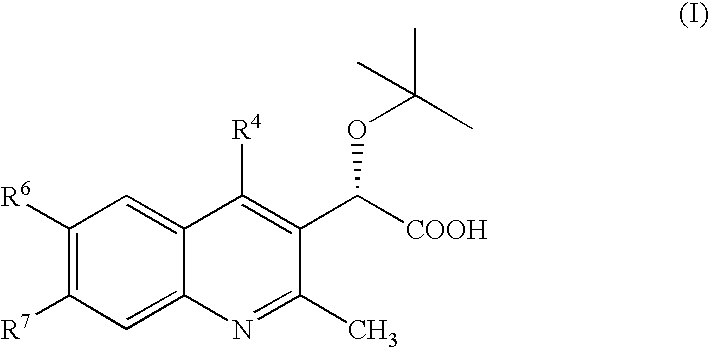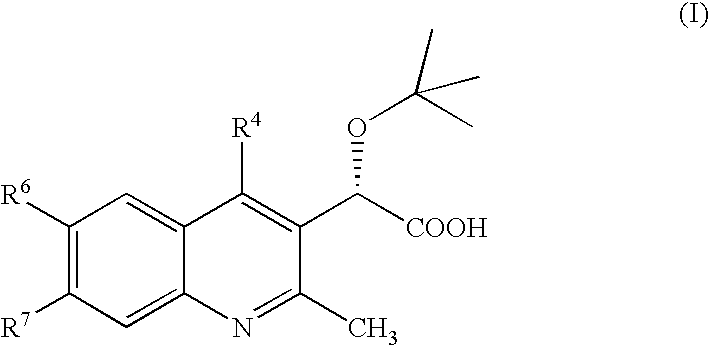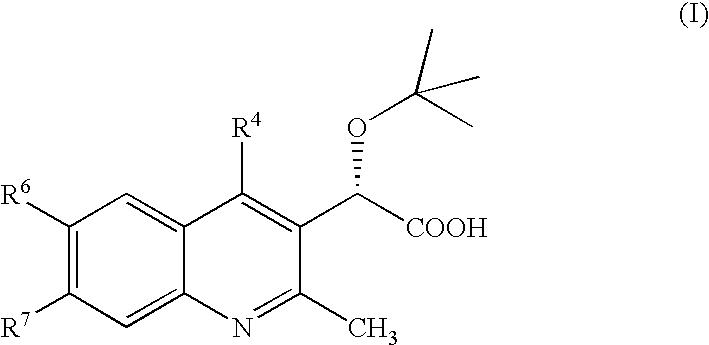Inhibitors of human immunodeficiency virus replication
a technology inhibitors, which is applied in the field of inhibiting the replication of human immunodeficiency virus, can solve the problems of hiv resistance to existing drugs, and achieve the effect of good pharmacological properties
- Summary
- Abstract
- Description
- Claims
- Application Information
AI Technical Summary
Benefits of technology
Problems solved by technology
Method used
Image
Examples
example 1
Synthesis of Quinoline Scaffold 1i
[0179]
Step 1:
[0180]In a 4-neck 500 mL round bottom flask equipped with a magnetic stir bar, condenser and Dean-Stark trap, diethyl acetylsuccinate (6 g, 0.026 mol), aniline 1a (2.5 mL, 0.028 mol), Amberlyst® 15 (0.08 g) and toluene (30 mL) are added. The resulting mixture is heated at reflux temperature for approximately 3 days at which time TLC shows only traces of SM. The reaction mixture is cooled to RT and the Amberlyst® 15 is removed by filtration. The filtrate is concentrated in vacuo to give a suspension of a solid in brown liquid. The filtrate is diluted with diethyl ether and cooled. The solid is filtered and the filtrate is concentrated in vacuo leaving a brown oil (˜7.8 g), which contains 1b and some cyclised intermediate. This crude intermediate is used in the next step without further purification.
Step 2:
[0181]In a 3-neck 100 mL round bottom flask a mixture of the crude intermediate 1b (˜7.8 g) and diphenyl ether (˜50 mL) are heated qui...
example 2
Synthesis of Fragment 2f
[0188]
Step 1:
[0189]Aldehyde 2a (5.85 g, 28.6 mmol, for preparation see: Michel, P. and Ley, S. V. Synthesis 2003, 10, 1598-1602, herein incorporated by reference), phoshonate 2b (6.6 g, 34 mmol) and K2CO3 (8.8 g, 64 mmol) are combined in MeOH (125 mL) and the reaction is stirred overnight at RT. The reaction is evaporated nearly to dryness and the residue is partitioned between H2O (250 mL) and EtOAc (500 mL). The water layer is washed with EtOAc (2×250 mL) and the combined organic layers dried over anhydrous Na2SO4 and concentrated to give alkyne 2c (5.55 g, 97% yield).
Step 2:
[0190]Alkyne 2c (5.0 g, 25 mmol) is dissolved in TFA (35 mL) and water (3.6 mL) and the solution is stirred at RT. After 30 min, the reaction is concentrated under reduced pressure and the residue is purified by CombiFlash® Companion to give diol 2d (1.8 g, 84% yield).
Step 3:
[0191]A solution of diol 2d (1.2 g, 14 mmol) and triethylamine (1.7 mL, 12 mmol) in DCM (80 mL) is cooled to 0° C...
example 3
Synthesis of Alkyne 3a
[0193]
Step 1:
[0194]Solid Pd(PPh3)4 (444 mg, 0.385 mmol) and CuI (146 mg, 0.769 mmol) are successively added to a solution of 6-iodochroman (10 g, 34 mmol) and alkyne 2c (11 g, 55 mmol) dissolved in DMF (23 mL) and diethylamine (115 mL). The reaction mixture is stirred overnight at RT and then concentrated, diluted with EtOAc (300 mL) and successively washed with brine, 1 N aqueous HCl and water (300 mL each). The organic layer is dried over Na2SO4 and the residue purified by CombiFlash® Companion to give alkyne 3a (10.8 g, 84% yield).
PUM
| Property | Measurement | Unit |
|---|---|---|
| natural abundance | aaaaa | aaaaa |
| temperature | aaaaa | aaaaa |
| temperature | aaaaa | aaaaa |
Abstract
Description
Claims
Application Information
 Login to View More
Login to View More - R&D
- Intellectual Property
- Life Sciences
- Materials
- Tech Scout
- Unparalleled Data Quality
- Higher Quality Content
- 60% Fewer Hallucinations
Browse by: Latest US Patents, China's latest patents, Technical Efficacy Thesaurus, Application Domain, Technology Topic, Popular Technical Reports.
© 2025 PatSnap. All rights reserved.Legal|Privacy policy|Modern Slavery Act Transparency Statement|Sitemap|About US| Contact US: help@patsnap.com



